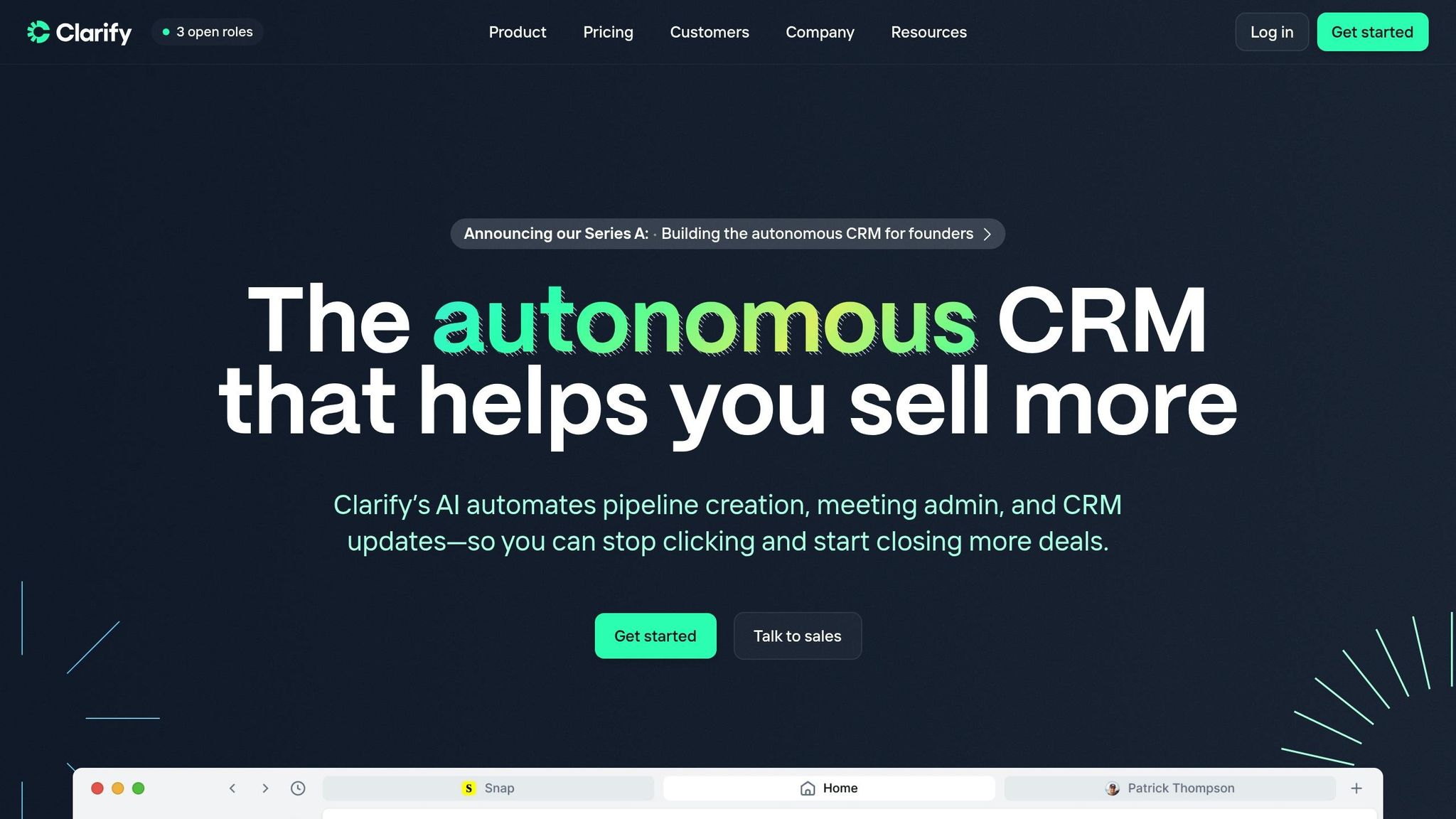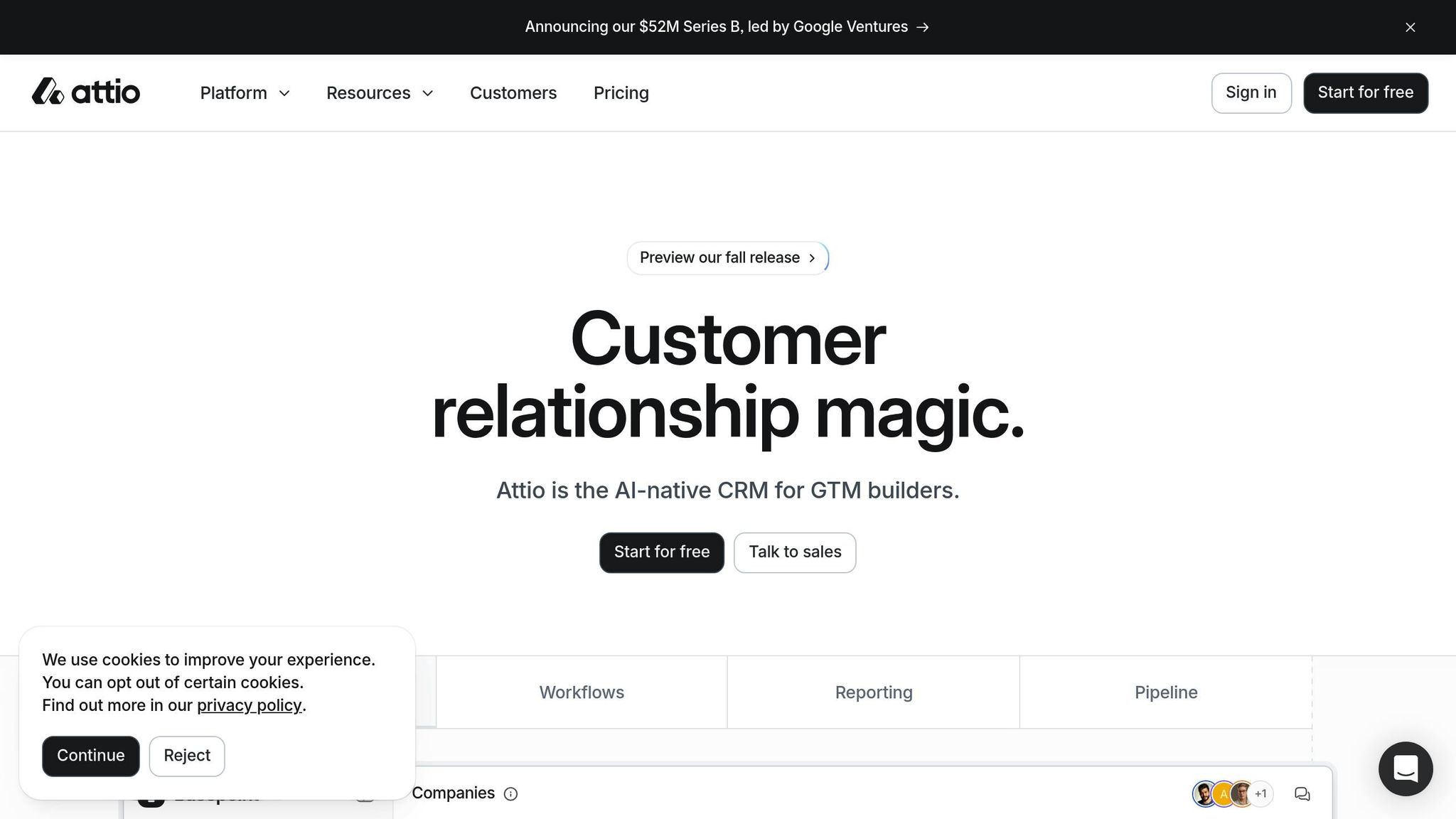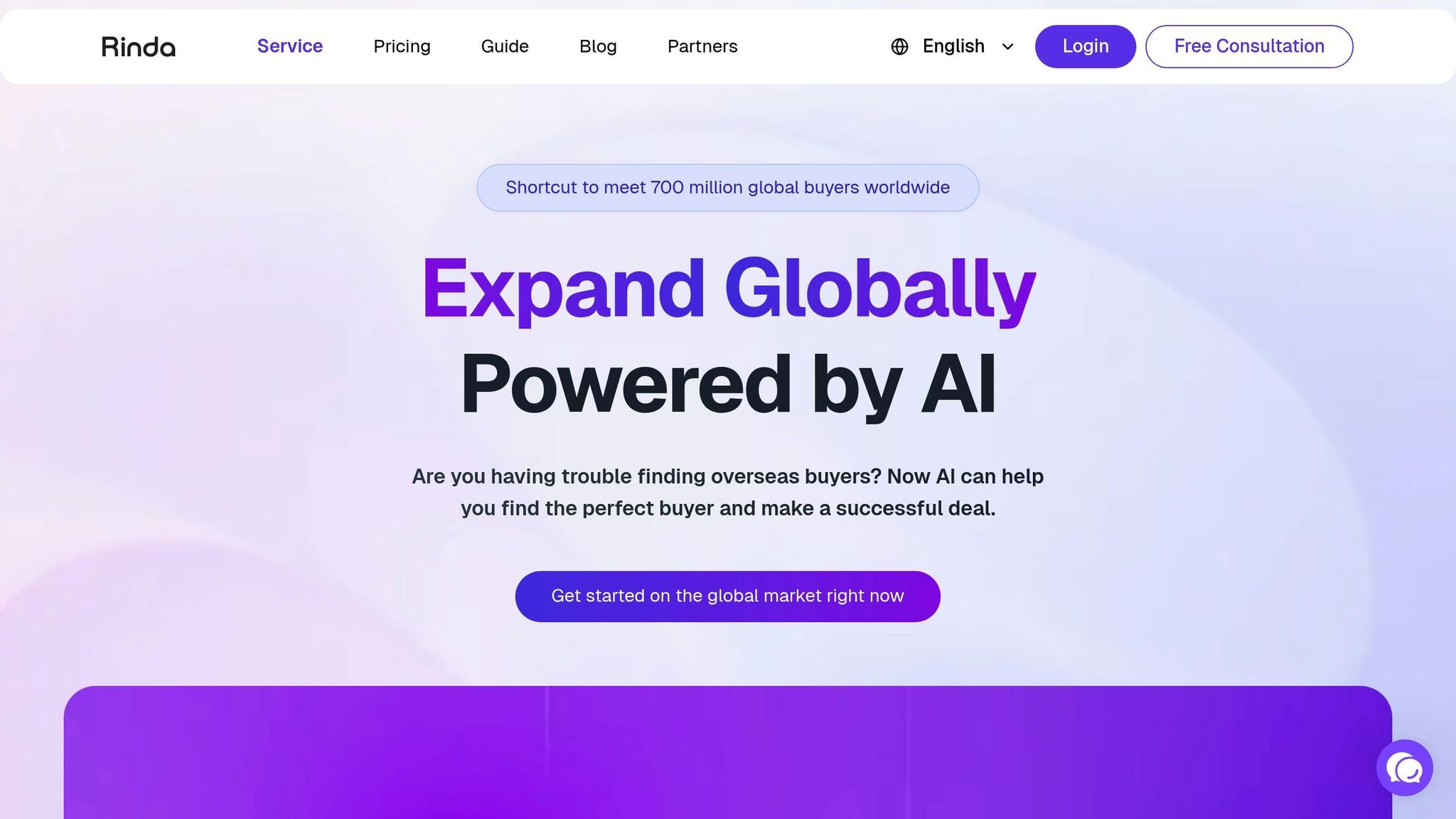The $82 Million Question: Why AI-Native CRM Startups Are Attracting Massive Seed Rounds
Explore how AI-native CRM startups are revolutionizing customer relationship management with rapid funding and innovative solutions.

AI-native CRM startups are reshaping the customer relationship management landscape, with recent funding milestones highlighting their growing appeal. Aurasell secured $30 million in seed funding within 28 hours, while Attio raised $52 million in a Series B round. Together, these investments total $82 million, underscoring a clear shift in how businesses approach CRM technology. As legacy systems struggle with complexity and inefficiency, AI-driven platforms are emerging as the solution, offering automation, predictive insights, and faster implementation.
In this article, you'll discover:
- How AI-native CRMs address long-standing issues with traditional platforms, cutting administrative tasks by over 40%.
- The core features driving investor confidence, including real-time data capture and predictive analytics.
- Insights from Attio and Aurasell’s funding success, showcasing the market demand for smarter CRM tools.
With the CRM market projected to reach $82.7 billion by 2025, businesses are under pressure to adopt tools that enhance productivity and sales outcomes. Read on to explore the potential of AI-native CRMs and how they’re transforming customer relationship management.
Autonomous CRM: How Clarify Is Reinventing a $100B Category

Problems with Legacy CRM Systems
The surge in funding for AI-driven CRM startups highlights a widespread dissatisfaction with legacy systems that have failed to keep pace with modern business demands. These longstanding issues illustrate why many investors are turning their attention to AI-first solutions. To understand this shift, it's essential to examine the core problems with traditional CRM platforms.
Why Traditional CRMs Fall Short
Legacy CRM systems are often bogged down by what experts refer to as "feature overload" - a clutter of tools that complicate rather than simplify workflows. Designed in an era that prioritized customization above all else, these platforms have become unwieldy, requiring significant training and ongoing maintenance to use effectively.
At the heart of the problem is their outdated architecture. Traditional CRMs function as rigid, database-centric systems that force sales teams to conform to the software's structure, instead of adapting to the way teams naturally operate. This misalignment results in sales representatives spending more time navigating clunky interfaces than engaging with customers, creating a paradox where tools meant to boost productivity end up hindering it.
Another major issue is the prevalence of data silos. Legacy systems often trap customer information in isolated compartments, making it difficult to gain quick, actionable insights. For example, when a salesperson needs to review a prospect's full journey, they may have to switch between multiple screens, export data, or even rely on external tools to assemble the complete picture.
Furthermore, the customization process for these systems is notoriously inflexible. It typically demands significant IT support, which is a barrier for small and medium-sized businesses that lack the technical resources to optimize their platforms. As a result, many of these systems remain underutilized, failing to deliver the value they promise.
Growing Demand for Smarter Solutions
The inherent flaws of legacy CRMs have been magnified by the rise of remote and hybrid work models. Today’s sales teams require tools that are intuitive, provide immediate insights, and don’t demand extensive training. The traditional model of lengthy implementation timelines and complex customizations no longer aligns with the fast-paced needs of modern businesses.
Market research underscores this shift, revealing that sales productivity is now a top concern for business leaders, particularly as economic pressures heighten the need for efficiency. Businesses are actively seeking CRM platforms that can deliver instant value and grow alongside their needs. This has opened the door for solutions that remove the complexity barrier that has long plagued the industry.
The rise of AI and machine learning has further reshaped expectations. Modern sales teams want tools that automate routine tasks and offer predictive insights without requiring extensive manual input. Unfortunately, legacy systems, built on outdated frameworks, struggle to integrate these advanced capabilities seamlessly. This growing gap between what businesses need and what traditional CRMs offer has created an urgent demand for smarter, more adaptive solutions.
What Makes AI-Native CRMs Different
AI-native CRMs are built with artificial intelligence woven into their very foundation, unlike older systems that attempt to bolt on AI as an afterthought. This deep integration influences everything from how quickly they can be implemented to their ability to scale over time. It also allows these systems to learn and adapt more effectively. These design choices result in distinctive, impactful features.
Core Features of AI-Native CRMs
AI-native CRMs stand out because they are built on several advanced architectural principles:
- Model-driven logic: Replaces outdated rule-based programming, enabling smarter decision-making.
- Data-centric approach: Leverages operational data to continuously train and refine AI models.
- Adaptive infrastructure and event-driven architectures: Ensures real-time responsiveness and scalability, vital for handling dynamic business needs.
- Continuous learning capabilities: Allows the system to evolve and improve as it encounters new scenarios.
- Integrated MLOps and AIOps practices: Automates tasks like model retraining, deployment, and monitoring for issues like data drift or bias.
How AI-Native CRMs Solve Legacy Problems
Thanks to their design, AI-native CRMs address the inefficiencies that plague traditional systems. Legacy CRMs often slow sales teams down with outdated processes, but AI-native platforms are built to streamline operations and deliver tangible results.
For example, AI-driven automation can slash administrative workloads by over 40%, cut data entry time by as much as 90%, shorten sales cycles by 50%, and boost conversion rates by 20%. These systems are also designed to stay effective even as market demands evolve.
Key Insight: The difference between AI-native and retrofitted AI solutions is game-changing. By rethinking CRM systems from the ground up, AI-native platforms unlock new levels of efficiency and effectiveness.
Case Studies: Attio and Aurasell

The shift toward AI-driven CRM platforms is no longer just a concept - it's happening now, as demonstrated by recent funding successes. These investments reflect a growing confidence among investors and businesses in reimagining CRM technology through artificial intelligence.
Both Attio and Aurasell have captured attention by showcasing tangible results from their AI-focused approaches. Their funding achievements mark a turning point in the evolution of CRM systems.
Attio's Game-Changing Funding Round
Attio, headquartered in London, recently secured a significant funding round, underscoring the rising demand for AI-native CRM platforms. The company positions itself as a modern alternative to outdated systems, offering intelligent automation and adaptable data modeling. By eliminating the rigidity of traditional CRMs, Attio provides a customized experience that simplifies integration and boosts user adoption. Investors see this as a smart solution to longstanding challenges, making Attio a standout in the market.
Aurasell's Lightning-Fast Seed Round
Aurasell made headlines by raising its seed funding in just 28 hours. The platform harnesses AI to deliver sales automation and predictive analytics, enabling businesses to analyze customer behavior, forecast sales, and handle repetitive tasks with ease. By addressing the productivity gaps of conventional CRMs, Aurasell has positioned itself as a forward-thinking solution. The speed of its funding reflects strong investor confidence in the promise of AI-powered tools.
These two examples illustrate a broader market shift toward CRMs that prioritize efficiency and innovation through artificial intelligence. They also highlight the growing momentum behind AI-native solutions, signaling a new era for CRM technology.
Why Investors Are Funding AI-Native CRMs
Investors are increasingly turning their attention to AI-native Customer Relationship Management (CRM) platforms, which are reshaping the way businesses operate. This shift is evident in the funding success of companies like Attio and Aurasell, signaling a major move away from traditional legacy systems. With the global CRM market expected to hit $82.7 billion by 2025, growing at a 14.2% compound annual growth rate (CAGR), it's clear that AI-native CRMs are being seen as the backbone of future business operations.
Venture capitalists aren’t just looking at these platforms as incremental upgrades - they view them as game-changers. The rapid pace of funding rounds reflects the belief that AI-native CRMs are essential for the next wave of business innovation. This enthusiasm aligns with broader market shifts that are driving demand for smarter, more agile CRM solutions.
Market Trends Driving AI-First Approaches
Several converging trends are fueling the demand for AI-powered CRM platforms, with a key driver being the need for real-time, predictive insights to support business decisions.
Automation is now a must-have. Sales teams today expect tools that can instantly capture leads, predict customer behavior, and offer actionable recommendations. These capabilities, which are built into AI-native CRMs, are becoming critical for staying competitive in fast-paced markets.
At the same time, customer expectations continue to rise. Businesses are under pressure to deliver personalized, timely interactions across a growing number of channels. Legacy CRM systems often fall short in meeting these demands, while AI-native platforms excel by automating and scaling personalized engagement.
AI-Native vs. Legacy CRM Comparison
The growing preference for AI-native CRMs becomes even clearer when comparing them to traditional systems. Investors are drawn to the following distinctions:
| Capability | Legacy CRMs | AI-Native CRMs |
|---|---|---|
| Data Capture | Manual entry and batch processing | Real-time automated capture and analysis |
| Insights Generation | Periodic reports requiring manual effort | Predictive analytics with automated recommendations |
AI-native CRMs address the limitations of legacy systems by embedding automation and artificial intelligence at their core. This design eliminates manual processes, reduces operational costs, and minimizes the need for extensive training or customization. More importantly, these platforms continuously adapt through machine learning and predictive analytics, ensuring they stay aligned with evolving business needs.
By offering a unified and automated solution, AI-native CRMs meet investors' demands for scalable, efficient tools that can handle growing complexities. These platforms not only enhance operational speed and flexibility but also enable businesses to maintain highly personalized customer interactions at scale.
Source: TechCrunch, August 26, Startup Funding News
RINDA's Position in AI-Powered CRM

As the CRM industry embraces AI-first solutions, RINDA stands out by fully integrating artificial intelligence into its core design. Unlike systems that merely add AI features to outdated frameworks, RINDA was built from scratch to address the persistent challenges of legacy systems, offering a modern and seamless experience.
This forward-thinking design mirrors the growing demand for smarter, AI-driven sales tools. By addressing key pain points like intelligent automation, real-time insights, and streamlined global operations, RINDA eliminates the inefficiencies tied to older systems. Its foundation allows it to deliver unmatched capabilities without the typical integration complexities.
RINDA's Key Features and Benefits
RINDA’s AI-native architecture provides a robust framework for automating every stage of the sales process. One standout feature is its AI-powered buyer discovery system, which identifies potential customers worldwide without the need for manual prospecting. This system doesn’t just generate leads - it verifies buyer interest in real time and performs credibility checks, ensuring sales teams focus on high-quality prospects.
With support for over 20 languages, RINDA also simplifies global outreach. The platform can send personalized emails in a prospect’s native language while maintaining consistent branding and messaging - no additional tools required. This capability removes language barriers, making global expansion more accessible.
RINDA further enhances its value with integrated performance analysis and adaptive learning. Beyond tracking email interactions, the platform analyzes communication trends, identifies successful strategies, and adjusts approaches based on real-world outcomes. This continuous improvement ensures that RINDA not only keeps up with market demands but becomes increasingly effective over time.
How RINDA Fits Current CRM Trends
RINDA exemplifies the shift toward unified, intelligent CRM solutions by consolidating multiple sales functions into one platform. Traditional CRM systems often require separate tools for lead generation, email marketing, translation, and analytics. RINDA eliminates this fragmentation by combining these features into a single, AI-driven solution. This integration streamlines workflows, reduces complexity, and delivers a cohesive experience that aligns with the evolving needs of today’s businesses.
FAQs
What makes AI-native CRMs more effective than traditional systems for boosting sales productivity and customer engagement?
AI-native CRMs are reshaping the way businesses handle customer relationships by taking over repetitive tasks, freeing sales teams to concentrate on what truly matters - building meaningful connections and closing deals. Research indicates these systems can enhance sales productivity by up to 30% while trimming sales expenses by 25%.
These platforms also integrate cutting-edge tools like predictive analytics and sentiment analysis, enabling businesses to craft highly tailored customer interactions that boost engagement and satisfaction. By automating time-consuming tasks like data entry and providing real-time insights, AI-native CRMs equip teams with the tools they need to make quicker, smarter decisions. This shift is redefining how companies approach customer relationship management, making it more efficient and impactful.
How do AI-native CRM platforms like Attio and Aurasell make it easier for businesses of all sizes to integrate and scale?
AI-driven CRM platforms such as Attio and Aurasell make it easier for businesses to integrate their systems and scale operations. Leveraging advanced AI, these tools streamline data workflows and connect smoothly with other software, accommodating the needs of both small startups and large enterprises managing increasing data volumes and complex processes.
By removing technical hurdles and automating routine tasks, these CRMs allow businesses to concentrate on growth while maintaining operational efficiency. Their design ensures they can be easily adopted and scaled, regardless of the organization's size or stage of development.
Why are investors betting big on AI-native CRMs, and what does this reveal about the future of customer relationship management?
Investors are increasingly placing their trust in AI-native CRM platforms, drawn by their ability to tackle the challenges that have long plagued traditional CRM systems. These platforms use AI to simplify workflows, improve customer interactions, and enhance operational productivity. A notable example is Aurasell, which recently raised $30 million in a mere 28 hours, showcasing the momentum behind this technology.
This surge in interest highlights a broader market shift toward digital transformation, automation, and tailored customer experiences. The enthusiasm from investors signals a strong belief that AI-driven solutions are not just a glimpse of the future but an essential asset for businesses striving to remain competitive in today’s data-centric environment.
Related Blog Posts
- The Startup Sales Playbook 2025: Y Combinator-Backed AI Agents Replace Traditional SDRs
- AI Sales Agents Replace 10,000+ Jobs in July - Is Your Sales Team Next?
- From Cold Calls to AI Agents: How B2B Sales Hit 82% Higher Conversions with Personalization at Scale
- From $40 to $3.1 Billion: Clay's GTM Engineering Revolution Shows the Future of B2B Sales Automation
